If you’re a merchant using a POS system, you’re probably familiar with “batching out” your transactions at the end of the day. This article provides a quick overview of batches, settlements, and why batch settlement in POS machines is essential for keeping your business running smoothly. For step-by-step instructions, see our guide on batching out credit card machines.
How card payments are processed
The first step is the authorization request, whereby the POS system sends a message to the credit card issuer to find out, among other things, if the cardholder has sufficient funds to cover the transaction. If so, the payment will be approved; if not, it will be declined. When the payment is approved, a hold is placed for that amount (the money isn’t transferred at this point). This step is also called verification.
The second step is processing or capture. This is when the funds leave the cardholder’s account and are transferred to the merchant’s account. To make this happen, the merchant sends transactions (in batches) to the payment processor, which categorizes them according to the issuing bank (i.e., the bank that issued the credit card).
What is batching out?
This process—also known as batch processing, dual message processing, and batch clearing—occurs when a merchant combines a bunch (or batch) of payment authorization codes and sends them to the payment processor. Batching out is usually done at the end of the day after merchants have closed the shop. Although it’s possible to batch out credit card transactions immediately after authorization, aggregating them into a single batch makes the most sense. The reason: processors charge fees for each batch-out request, so doing it multiple times a day becomes an expensive, not to mention time-consuming, proposition.
What is settlement?
As mentioned before, settlement is the process by which merchants receive transaction funds into their accounts. Unsettled batches are called “open batches,” which are closed once settlement occurs. Here is the process:
- The payment processor sends the transactions to the acquiring bank (i.e., a bank or financial institution that handles card payments for merchants)
- The funds are deposited in the merchant’s account, and the acquiring bank sends transaction details to the card issuer
- The card brand transfers funds from the issuing bank to the acquiring bank
- The transaction is posted on the cardholder’s credit card statement
Gross settlement vs. net settlement
Settlements can either be gross or net. Merchants that opt for gross settlements will receive the full amount of funds when the batches settle without any fees deducted. Then on the last day of the month, the fees will be deducted from the account. On the other hand, merchants with a net settlement arrangement have the card processing fees deducted daily.
Get your complete guide to next day funding merchant services
Learn how batch processing works, its benefits, and best practices to cut delays and keep cash flowing—including how batch settlement in POS machines plays a key role.
- Understand the difference between batch vs. real-time processing
- Learn how to minimize fees, delays, and funds on hold
- Get step-by-step workflows, use cases, and expert tips for success
Mastering batch settlement in your POS machine
Batching out and settlement is more than just a routine step—it’s a vital part of payment processing that directly impacts your cash flow and day-to-day operations. By understanding how batch settlement in POS machines works, merchants can minimize delays, avoid unnecessary fees, and keep funds moving smoothly.
If you still have questions about batching out or settlements, our Payment Experts are here to help. And for more insights into payment processing best practices, be sure to explore our blog and subscribe to our newsletter.
Categories

